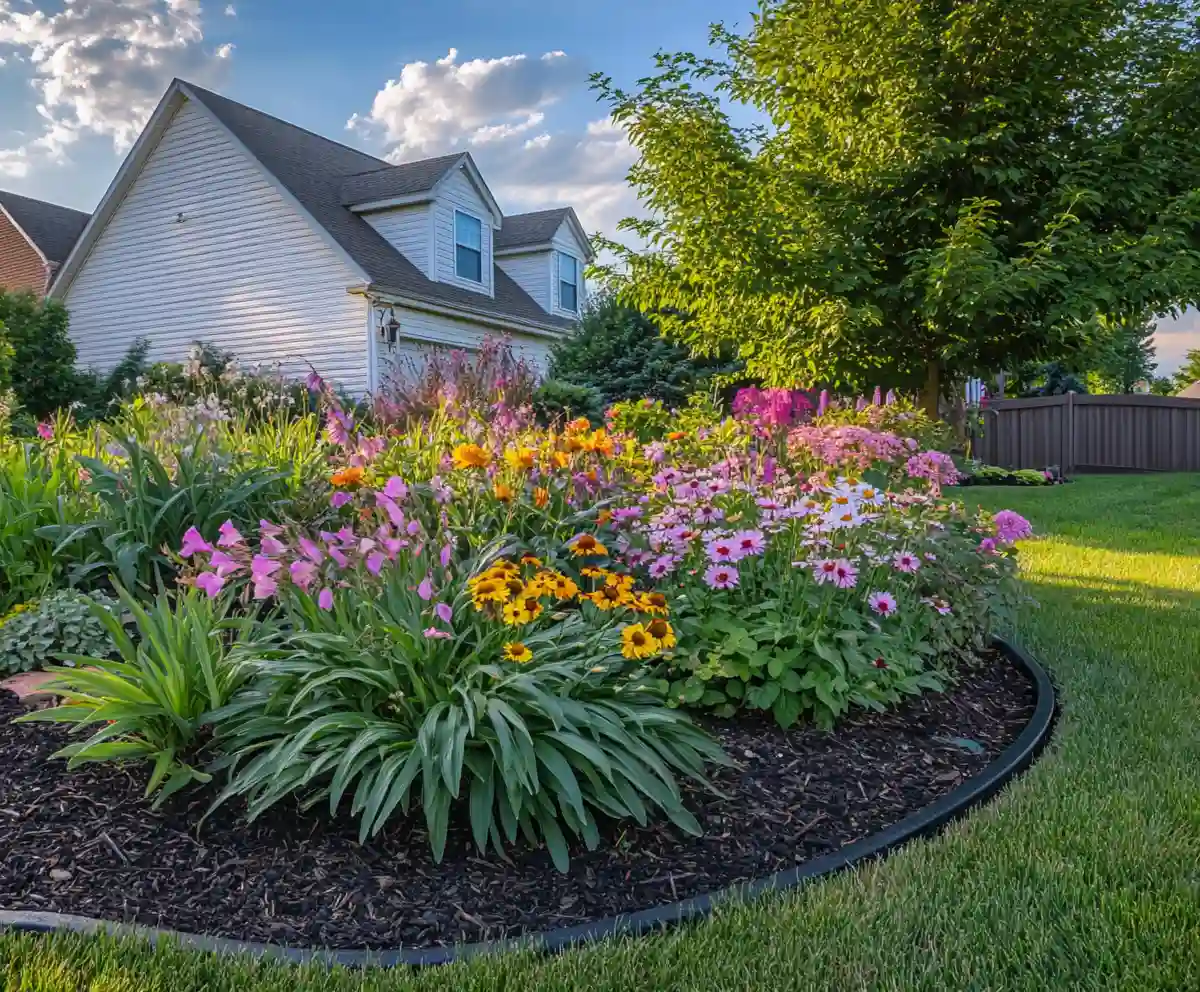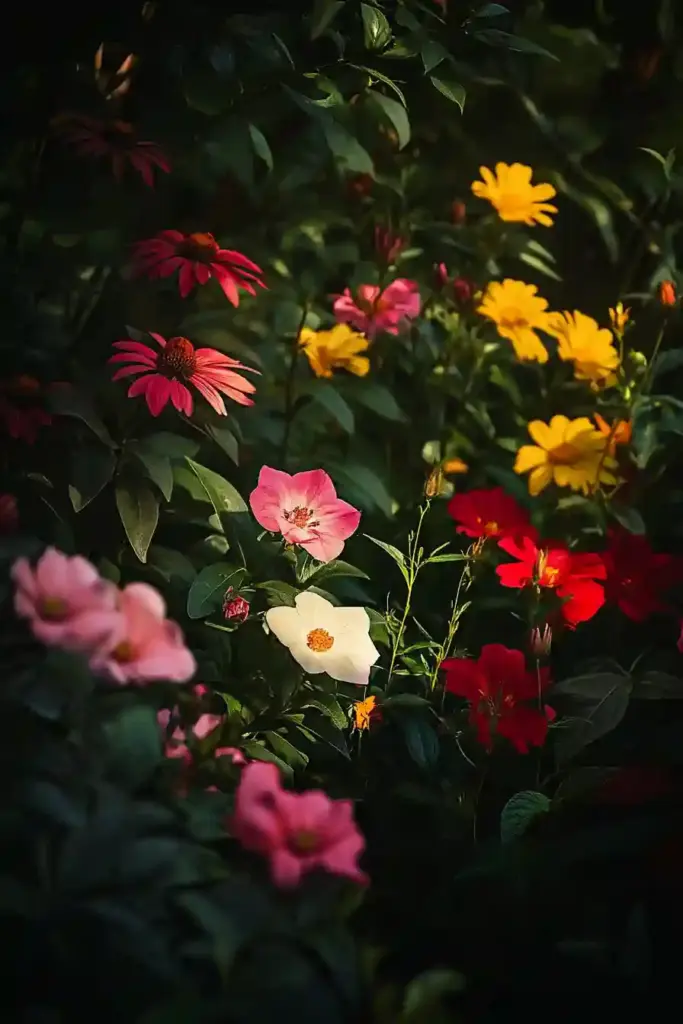Keeping your garden vibrant throughout the year doesn’t have to be complicated. In fact, with the right strategy, perennials made easy can be your new gardening mantra. One of the biggest frustrations for gardeners—especially beginners—is that their flower beds look incredible for a few weeks and then turn into a dull sea of green. Sound familiar?
You’re not alone. Many gardeners unknowingly fall into a common trap I like to call “flower fixation”—focusing only on the blooms you see in the store rather than thinking long-term. The result? Gorgeous bursts of color in midsummer, followed by months of blah.

But don’t worry—there’s a better way. Let’s talk about how you can design a perennial garden that stays fresh, colorful, and full of life through every season.
The Biggest Perennial Gardening Mistake (And How to Avoid It)
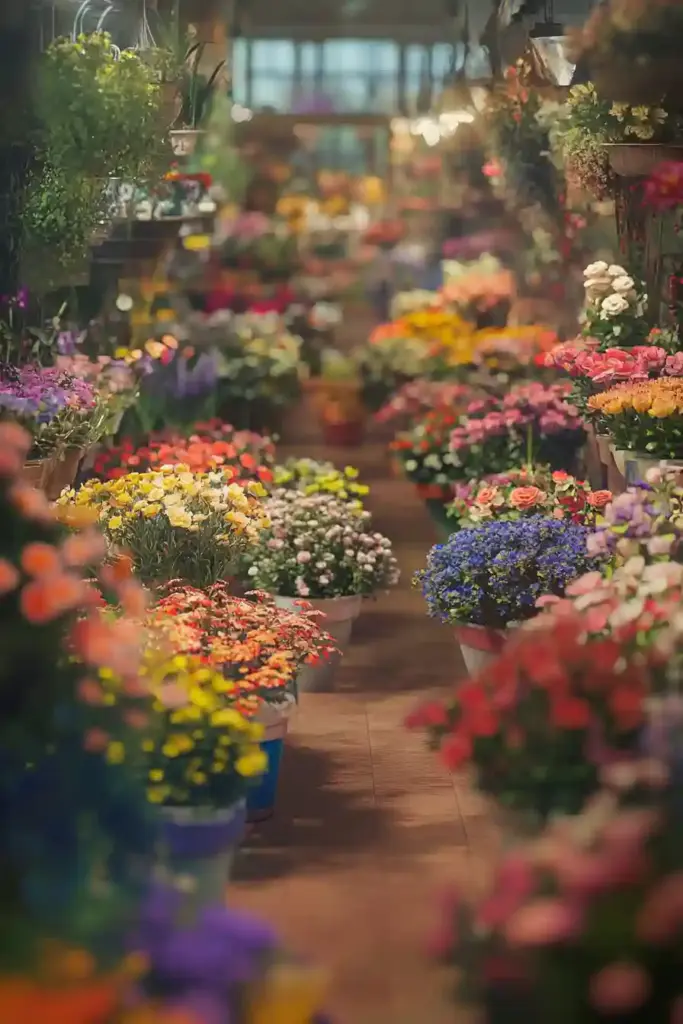
When it comes to planting perennials, most gardeners make the same mistake—and it all starts at the garden center. You walk in, and what catches your eye first? Flowers, of course. Bright, blooming, beautiful flowers. It’s natural to gravitate toward them, but this is where flower fixation begins.
Retailers typically stock plants that are in full bloom, because they’re more likely to sell. But here’s the catch: those flowers might only bloom for a few weeks in your garden. So, when you choose all your plants based on what’s blooming at the time, you’re setting yourself up for a very short-lived show.
The result? A flower bed that looks amazing in July… and lifeless the rest of the year.
What’s the Fix?
Start by shifting your mindset. Instead of choosing plants just for their flowers, consider the bigger picture. Think about:
- When each plant blooms
- How long the bloom lasts
- What the foliage looks like when it’s not flowering
By planning around more than just the blossoms, you’ll lay the foundation for a garden that’s attractive from spring to winter—not just during its peak.
How to Create Gorgeous Perennial Flower Beds
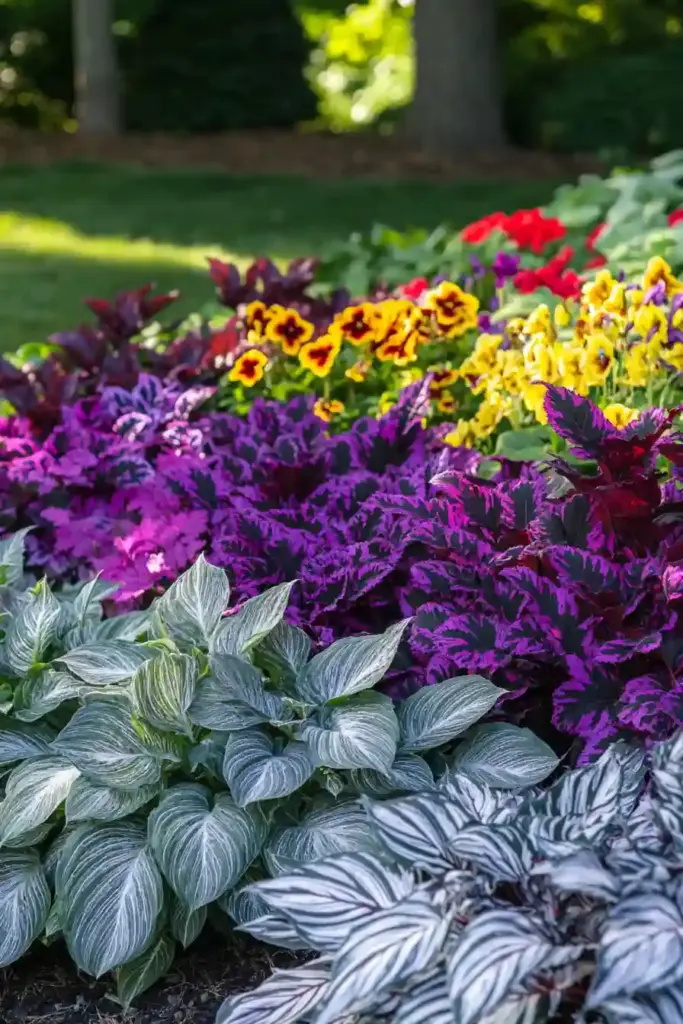
Want to know the secret to a stunning garden that looks amazing even when nothing’s blooming? It’s all about foliage first. If you focus only on flowers, your garden will likely have brief moments of brilliance followed by long stretches of meh. But when you start with the right foliage, you create visual interest that lasts all year.
🌿 Why Foliage Matters
Foliage provides the texture, shape, and color that give your garden depth and dimension—even in the off-season. And the best part? Perennials today come in a wide variety of leaf colors, from rich purples and deep reds to bright chartreuse and silvery blues.
🔧 Design Tips for Foliage-First Gardens
- Mix leaf colors: Combine bold burgundy with lime green, or silver with deep green to create stunning contrast.
- Play with texture: Mix smooth, broad leaves with fine, wispy grasses or spiky foliage.
- Vary the shape and size: Alternate tall, slender plants with short, bushy ones to create natural layers.
By using foliage as your foundation, you’ll build a perennial garden that looks lush and lively—even when the flowers take a break.
Once your base is in place, then it’s time to sprinkle in blooms for extra pops of seasonal color. But remember—flowers are the accent, not the main event.
Tips for Creating an Ever-Blooming Perennial Garden
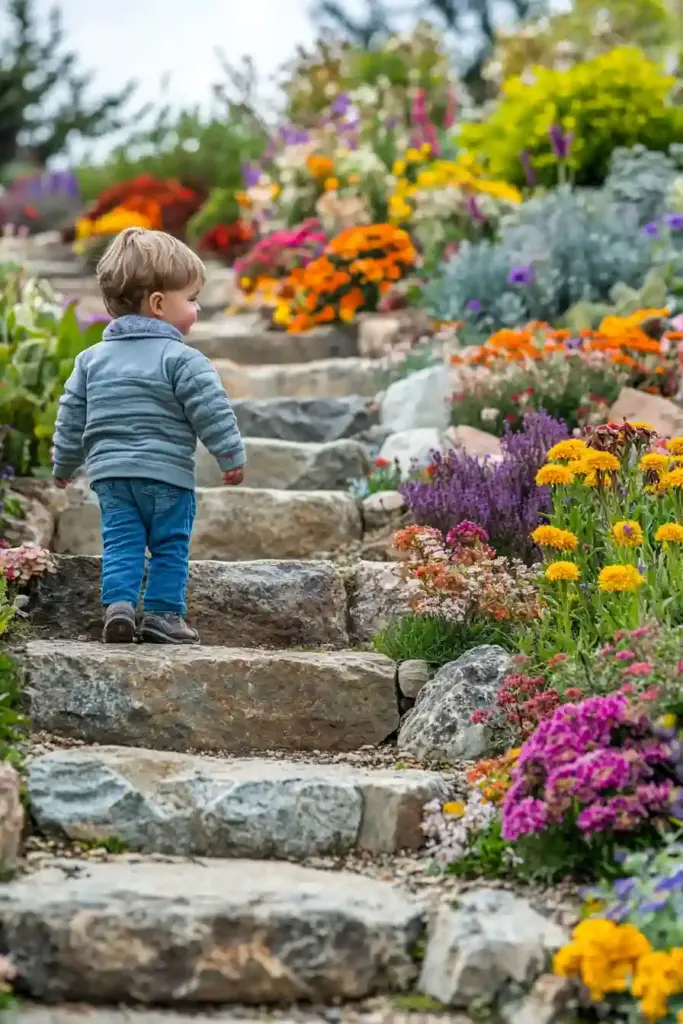
Now that your foliage game is strong, let’s bring in the color—with intention. The trick to a truly ever-blooming garden lies in timing. Instead of loading up on plants that all flower in midsummer, the goal is to layer perennials that bloom at different times of the year. That way, something beautiful is always happening.
🗓️ Stagger Your Bloom Times
Before buying any plant, check the label or tag for two key pieces of info:
- Bloom time (spring, summer, fall?)
- Mature size (so it doesn’t crowd out neighbors)
Choose a variety of perennials that will take turns blooming. A smart mix ensures your garden evolves through the seasons, rather than peaking once and fading away.
🌼 Plant in Layers
Here’s a simple strategy to keep the flowers coming:
- Early bloomers: Fill in with spring bulbs and early risers like bleeding heart or creeping phlox.
- Mid-season stars: Coneflowers, lilies, black-eyed Susans.
- Late-season color: Sedum, mums, Russian sage, Japanese anemones.
And don’t forget to tuck them in among that colorful foliage we talked about earlier—this contrast makes flowers pop even more.
🧠 Pro Tip:
Avoid grouping too many plants that bloom at the same time together. Instead, scatter bloom times across your beds for that seamless, ever-changing look.
Designing a Four-Season Perennial Garden
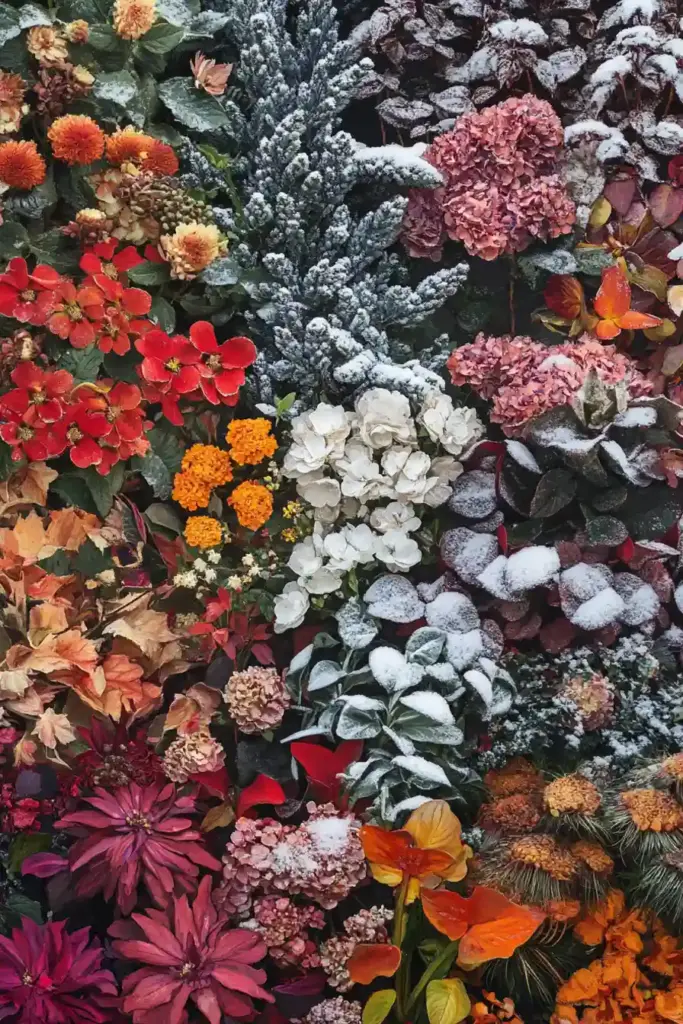
Most gardens hit their stride in summer, but a truly breathtaking perennial garden offers something special all year round. That means thinking beyond warm weather and planning for spring bursts, summer color, fall texture, and even winter interest.
🌸 Spring: The Wake-Up Call
Spring is when your garden shakes off the cold and starts to shine. Kick things off with early bloomers like:
- Tulips, crocus, and daffodils
- Bleeding heart and creeping phlox
- Colorful foliage from ajuga or heuchera
These plants set the stage with soft color and fresh energy, welcoming the new season.
☀️ Summer: The Showstopper
Summer is when most gardens peak—and yours will too, without overdoing it. Mix these into your beds:
- Coneflowers, lilies, black-eyed Susans, phlox
- Hardy hibiscus, sage, liatris
- Foliage contrast from hostas and ornamental grasses
Just remember our rule: stagger those bloom times to avoid the dreaded midsummer burnout.
🍁 Fall: Rich Color and Texture
As the air cools, your garden can still sizzle with:
- Sedum, mums, turtlehead, Japanese anemone
- Ornamental grasses and bold foliage tones (think burgundy and bronze)
- Pruned early bloomers to make room for fresh fall stars
❄️ Winter: Structure & Stillness
Even when the flowers are gone, your garden can offer beauty. Leave some plants standing to catch snow or provide food for wildlife, like:
- Dried coneflowers, rudbeckia, and hydrangeas
- Sedum’s seed heads and tall grasses
- Decorative twigs or evergreens for structure
A four-season garden isn’t just more interesting—it’s more satisfying to live with year-round.
Garden Perennials for Every Season: A Year-Round Planting Guide
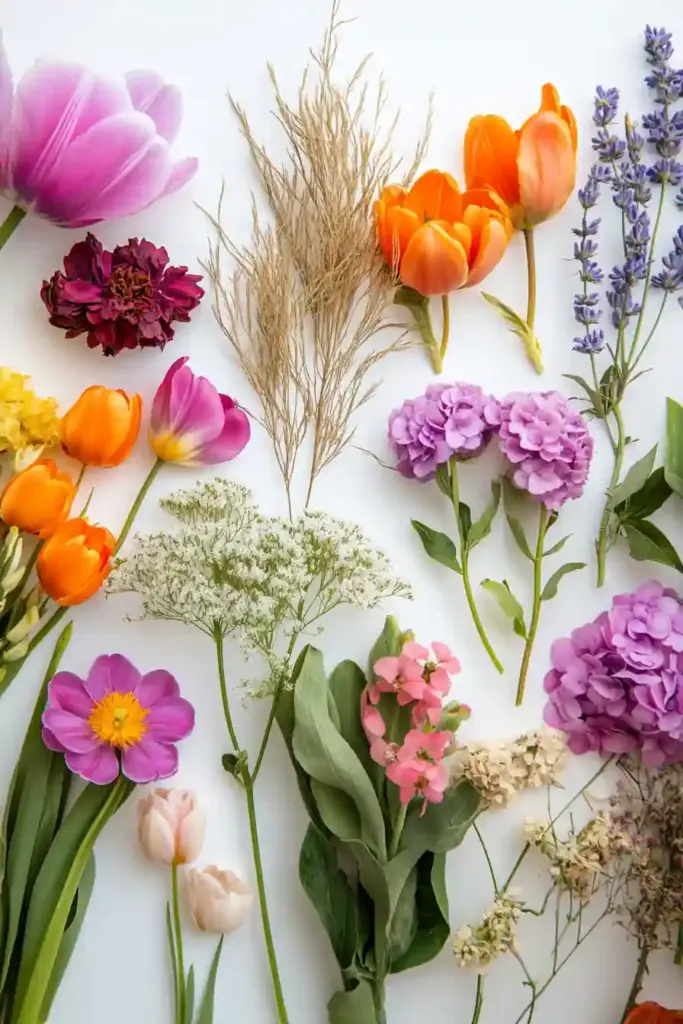
If you’re aiming for a garden that never feels empty, this is your cheat sheet. Below is a breakdown of go-to perennials by season to help you plan a dynamic, ever-changing landscape that keeps things interesting 365 days a year.
🌱 Early Spring Bloomers
Start the season off strong with these vibrant choices:
- Bulbs: Tulips, crocus, daffodils
- Ground covers: Creeping phlox, ajuga
- Shade lovers: Bleeding heart, hellebores
- Foliage favorites: Sedums, heuchera (coral bells)
These add splashes of color while the rest of the garden is just waking up.
🌼 Spring to Early Summer Stars
As temperatures rise, these plants start showing off:
- Perennials: Peonies, irises, lupine, poppies
- Shrubs: Spirea, weigela, honeysuckle
- Foliage fillers: Lungwort, hostas, early coral bells
They bridge the gap between spring’s freshness and summer’s bold blooms.
🌻 Summer Blooming Champions
This is when most gardens hit their stride. Try these for long-lasting summer drama:
- Coneflowers (echinacea)
- Black-eyed Susan (rudbeckia)
- Phlox, liatris, sage, lilies
- Butterfly weed and hardy hibiscus
Just remember: don’t go all-in here—mix in plants from other seasons to avoid a summer-only garden.
🍂 Fall and Late-Season Favorites
Extend the color well into autumn with these hardy heroes:
- Sedum (especially varieties with colored foliage)
- Mums, Japanese anemones, turtlehead
- Russian sage, asters, goldenrod
Fall is also the time when colorful foliage from earlier perennials makes a second impression.
❄️ Perennials for Winter Interest
Don’t cut everything back! Leave these plants standing to enjoy structure, movement, and even bird activity:
- Dried coneflowers, rudbeckia, hydrangeas
- Sedum seed heads and ornamental grasses
- Evergreens and shrubs with colorful stems (like red twig dogwood)
Winter gardens can be peaceful and beautiful when you let nature take the lead.
🌸 Bonus: Variable Bloomers
Some perennials have flexible bloom times depending on variety:
- Roses
- Hydrangea
- Clematis
- Astilbe
Mix early and late blooming varieties for extra flexibility.
Maintenance Tips for Perennials Made Easy
Designing a perennial garden is only the beginning—keeping it thriving with minimal stress is where the magic happens. The good news? With a few simple habits, you can enjoy a beautiful, low-maintenance garden that basically takes care of itself (well, almost).
🌾 Keep Weeds in Check
Mulch is your garden’s best friend. It:
- Suppresses weeds naturally
- Retains moisture
- Makes your plants pop against a clean background
Use natural hardwood mulch or leaf compost, and refresh it annually for the best results.
🌱 Feed for Growth
Perennials are long-term performers, so give them a boost during active growth in spring and summer:
- Use a balanced organic fertilizer or compost tea
- Fertilize lightly to avoid overgrowth or weak stems
✂️ Prune for Power
Deadheading and pruning keep things tidy and encourage fresh blooms:
- Snip off spent flowers to promote new growth
- Trim leggy or burnt foliage every few weeks
- Cut back aggressive growers to maintain shape
A monthly once-over can make a huge difference.
📏 Stake When Necessary
Some taller or top-heavy perennials tend to flop—especially after rain. Use simple stakes, tomato cages, or decorative supports to:
- Keep blooms upright
- Improve airflow and reduce disease
- Maintain a clean garden shape
🧤 Tools That Make It Easy
Having the right tools on hand makes upkeep a breeze. Two garden MVPs:
- Hori Hori knife – great for weeding and dividing perennials
- Cobrahead weeder – precision tool for tight spaces
Invest once, and your future self will thank you every season.
Conclusion: A Garden That Grows With You
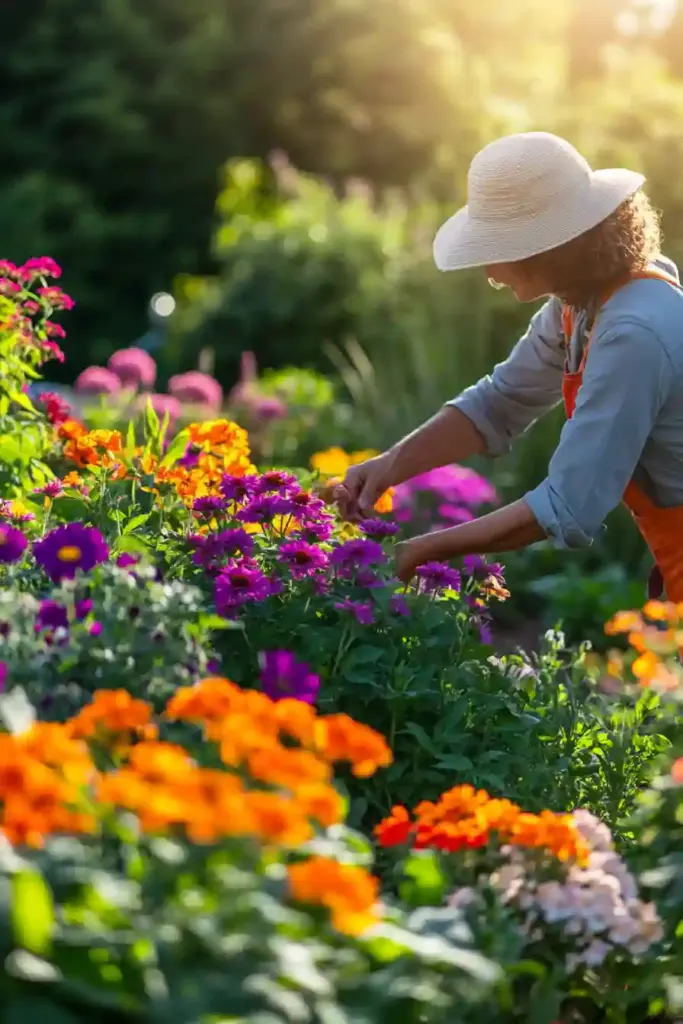
Perennials don’t have to be complicated. In fact, with a little planning and a focus on foliage, bloom timing, and seasonal variety, perennials made easy becomes more than a phrase—it becomes your reality.
By avoiding flower fixation, designing with foliage first, and mixing bloom times throughout the year, you’ll create a landscape that’s colorful, textured, and alive no matter the season. Add in a few smart maintenance habits and the right tools, and your garden will practically take care of itself.
So go ahead—design with confidence, plant with purpose, and enjoy your vibrant, ever-evolving perennial paradise year after year.

